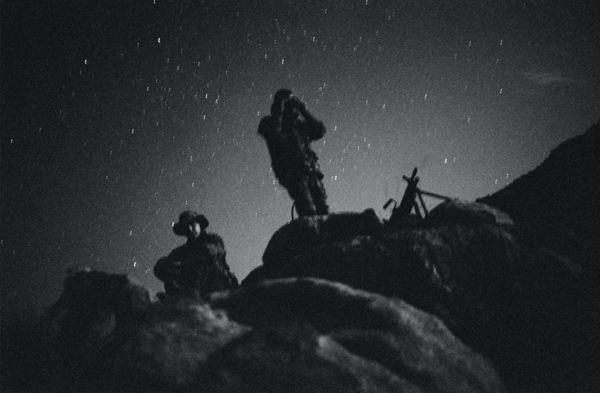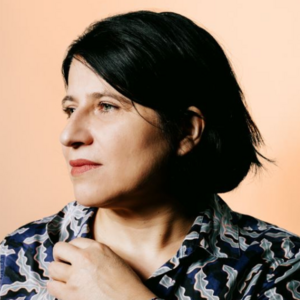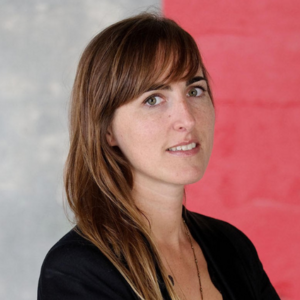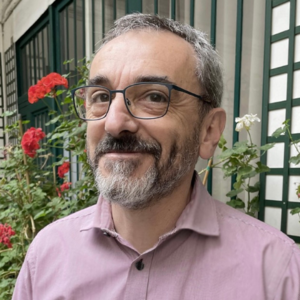
Call for projects file : photographic residency
The Musée de l'Armée is launching a call for applications targeting up-and-coming and experienced auteur photographers for a photographic residency. The goal: to develop an exclusive project at a time when the Musée de l’Armée is starting a new chapter in its history with its large-scale extension and transformation project, MINERVE (2022-2030)
The deadline for the receipt of applications for the photographic residency has now been reached.
As the deadline for receipt of applications is midnight on 10 February 2023, new applications for the photographic residency are no longer accepted.
The photographic residency in short:
- The Musée de l'Armée is offering an annual residency, running from April to October 2023, to an up-and-coming or experienced photographer, with a view to developing an in situ artistic project on a variety of subjects, in the context of the Museum’s extension and transformation project.
- The artist in residence will be hosted in half-board and benefit from a prestigious work environment, and special assistance, and will receive a grant of €10,000 gross inclusive of tax.
- They will be invited to take part in the Museum’s cultural life and to present their work through a physical event (lecture, exhibition, publication, etc.).
- Submission of application files is set for February 2023.
About the Musée de l'Armée

Established in 1905, the Musée de l’Armée is a museum of history, science and technology, fine arts and society all in one.
Photography holds a special place among the uniforms, weapons, drawings, paintings and everyday objects it contains, with a collection of almost 80,000 items, all materials and processes combined, dating from 1845 to the present day.
The Musée de l’Armée has been committed to encouraging photographic creation since 2009, getting photographers to provide their own unique creative perspectives on subjects to do with the history of France’s armed forces and military engagements: Afghanistan in 2009 with Éric Bouvet; the Institution Nationale des Invalides in 2018 with Philippe de Poulpiquet; and in 2022 with Édouard Elias with special forces in the Sahel.
The aim of the photographic residency

Committed to an ambitious ministerial project of extension and transformation known as MINERVE (Mémoire, INvalides, Engagement, Recherche, Visite Evolutive), starting in 2022 and set to be completed in 2030, the Musée de l’Armée is continuing its support to the renewal of methods of contemporary photographic creation by launching an annual residency, open to a wide range of practices and international in scope.
The photographic residency’s goals
- To make the Musée de l’Armée an actor in supporting the photography ecosystem: by providing an outstanding artistic work environment and personalised assistance, the Musée de l’Armée wishes to offer further support to photographic creation.
- To become better known to the public at large: the residency will contribute to an unprecedented increase in the Musée de l’Armée’s visibility among the general public and reflect the institution’s concerns through a recognised artistic medium.
- To fund an original project consistent with the Museum’s development and missions, image education in particular, and contributing to understanding of the contemporary world through military history.
- To further increase the diversity of the Musée de l’Armée’s heritage collection by capturing the extension and transformation project’s atmosphere in all its aspects as a “living laboratory”.
Who can apply?
Applications for the Musée de l’Armée’s photographic residency are open to all professional photographers, whatever their chosen means of expression (documentary, reportage, visual art, etc.), irrespective of age and nationality. Candidates must already have exhibited or published their images.
What kinds of artistic projects are prioritised?

The Museum is keen to assign a special place to photographic creation by hosting residencies by artists capable of providing distinctive photographic perspectives while working among its teams and within its walls; such residencies are open to all the medium’s techniques and processes without exception, and to all registers and sensibilities (documentary, reportage, visual art, etc.): an initiative that will constitute a unique visual archive with each succeeding year.
With this in mind, the residency provides an opportunity for photographers to develop artistic projects in situ based on themes put forward by the Museum:
- the collections
- the Hôtel National des Invalides' architecture and ecosystem
- creation of tomorrow's Musée de l'Armée
- life and its rhythms at the Musée de l'Armée
- the Army-Nation relationship and civic awareness
What are the reception conditions?
- A grant: The artist will receive a lump-sum grant totalling €10,000 gross incl. tax for the residency period running from the month of April to the month of October 2023. Such sum includes residency fees, transport, meal and accommodation expenses.
- An outstanding work environment: Residencies will take place at the Hôtel National des Invalides, more specifically in the areas devoted to the Musée de l’Armée. Throughout their projects, artists will be assisted by an “artistic consultant” (administrative, critical, logistical and technical support).
- Advantages: The artist will have use of a shared office in the building, a card enabling them to have lunch at the administrative restaurant at highly preferential rates, all the accesses required for ease of movement within the Museum’s walls in compliance with the rhythms and conditions set down for the ceremonies that mark the official memorial calendar.
As far as possible and depending on the artist’s presence schedule drawn up at the start of the photographic residency at the Musée de l’Armée, logistical assistance will be provided for reservation of accommodation and/or hotel nights at controlled prices.
How will the residency be carried out?

- A tailor-made pace of creation: the residency will take place between April and October every year, at a personalised pace adapted to the parties concerned. The artist will draw up a work schedule and may be invited to project meetings and study days and trips; witness movement and maintenance of works and the mounting of exhibitions, etc.
- Participation in the Musée de l’Armée’s cultural life: The artist in residence may occasionally be asked to take part in various of the Musée de l'Armée’s events (White Night, European Museum Night, European Heritage Days, etc.). Artistic and cultural actions may also be carried out targeting a variety of audiences (workshops, encounters).
- Review of the highlights of the Musée de l’Armée’s photographic residency artists will be asked to report on the development of their work over the course of their residencies during dedicated interviews (e.g. via the Museum’s social networks) and present their career and artistic approach to the Museum’s governing bodies.
-
At the end of their residencies, artists will be asked to review and present the work they have carried out at the Musée de l’Armée, whether it has been or is almost completed, at a public event whose form will be decided at a later date (exhibition, publication, soiree, etc.).
En fin de résidence, l’artiste sera invité à un temps de restitution et de présentation du travail élaboré au musée de l’Armée, qu’il soit finalisé ou en cours d’achèvement, sous la forme d’un événement public dont la forme sera définie ultérieurement (exposition, publication, soirée).
What is the project’s schedule?
- Launch of the call for applications: 10 November 2022
- Reception of applications: 10 February 2023 at the latest
- Choice and announcement of finalists: End March 2023
- Selection panel and announcement of the winning candidate: April 2023
- Residency: between April and October 2023.
A maximum of five finalists will then be selected and invited to a 20-minute interview by a panel whose decisions are final.
Candidates will be informed of its decision in mid-April 2023 at the latest/
Announcement of the winner will be published on the Musée de l’Armée’s institutional website.
The deadline for the receipt of applications for the photographic residency has now been reached.
As the deadline for receipt of applications is midnight on 10 February 2023, new applications for the photographic residency are no longer accepted.
Photographic residency regulations

Dimitri Beck
Dimitri Beck was born in Paris in 1972 and started his career as a freelance journalist. Since 2008, he has been Director of Photography at Polka, a magazine he cofounded alongside the Genestar family. He is a regular speaker at conferences on narration through image and sign at Sciences Po – Paris’ Department of Journalism and Spéos Photography School. He was a radio columnist on France Info for several years and currently has a podcast on TSF Jazz. After working at Reza’s Webistan agency in Paris, he went on to direct the Aina Photo agency in Kabul from 2004 to 2006, participating in the training and promotion of a generation of Afghan photographers, and was editor of Les Nouvelles de Kaboul magazine and New Afghanistan at the same time.

François Boucard
Since 1998, François Boucard has been Manager of the Carré d’Art municipal gallery in Chartres-de-Bretagne (Ille-et-Vilaine). The venue was founded in 1991 and, since 1997, is the Rennes conurbation’s only permanent gallery exclusively dedicated to photography. Presiding over a wide-ranging programme of regular exhibitions by photographic authors (six or seven per season) in situ and offsite, he has developed the gallery’s activities in three directions: the public (varied programming and educational actions); artists (support to art photography through organisation of residencies and help with publication of books of photographs); and cultural outreach, via the many partnerships with local actors prioritising multidisciplinary approaches. Carré d’Art has been a member of the Diagonal network since 2020 and joined the a.c.b. (contemporary art in Brittany) network in 2021.

Jean-François Camp
While he was the Iranian Ministry of the Environment’s photographer, Jean-François Camp opened a photography laboratory in Teheran in 1975. He was trained at the School of Visual Arts in NYC, and participated in the making of 10 films on Iran for Antenne 2. He covered the Islamic Revolution from 1979 to 1981, and then, following his return to France, worked for the Publiphoto laboratory. In 1986, he joined forces with Pascal Hérold to create the DUPON Bastille laboratory, which became one of the Visa festival’s regular partners. Jean-François Camp is a great supporter of auteur photography, creating the Planète Albert Kahn Prize with Jean-François Forchantre and the Un Photographe pour Eurazeo Prize with Elisabeth Bret Sayer. He founded the International Photojournalism Centre (CiP) in Perpignan in the context of the Visa Pour L’Image Association, of which he is currently Vice-President. He took over the Cosmos agency’s gallery with Annie Boulat and created Espace DUREV, a venue dedicated to photographers. In 2019, along with Jean Luc Monterosso, he designed the William Klein Academy of Fine Arts’ Prize, whose first winner was the great Indian photographer Raghu Rai, a member of the Magnum agency.

Nathalie Chapuis
Nathalie Chapuis trained as an art historian and is currently Co-Director of the Atelier EXB publishing house, following ten years of collaboration with Xavier Barral. She has published numerous works with French and foreign institutions active in the world of photography, including the Centre Pompidou, Le Bal and the Henri Cartier-Bresson Foundation in Paris, the Fotomuseum in Rotterdam and MASS MoCA in Los Angeles. Her most recent publications include Josef Koudelka’s Ruines, Harry Gruyaert’s Between Worlds, Kurt Tong’s Dear Franklin and Alexis Cordesse’s Talashi.

Héloïse Conésa
With a Doctorate in Art History from Paris 1-Panthéon Sorbonne University, Héloïse Conésa has been heritage curator responsible for contemporary photography at the Bibliothèque nationale de France since 2014. She has been curator or co-curator of a number of exhibitions including Dans l’atelier de la mission de la DATAR (Arles, 2017), Paysages français, une aventure photographique (BnF, 2017), Denis Brihat, de la nature des choses (BnF, 2019), Ruines - Josef Koudelka (BnF, 2020), La photographie à tout prix: une année de prix photographiques à la BnF (2021), and Ce monde qui nous regarde: les 15 ans de l’agence NOOR (BnF, 2022). She is currently preparing the L’épreuve de la matière (BnF, 2023) and Noir et blanc, une esthétique de la photographie (BnF, 2023) exhibitions, and will be presenting a report on the major photographic commission entrusted to the BnF by the Ministry of Culture, “French Radioscopy in the 2020s”, at the BnF in 2024.

Véronique Figini-Veron
An expert with the Paris Court of Appeal, Véronique Figini-Veron is a photography historian. A member of the Board of Directors of the Association for the Development of Cultural History (ADHC), she is Co-Director of the “Photography and History” research seminar in collaboration with the National Archives and co-supervises the “Socio- photography study of the digital transition” workshop, supported by ArTeC. She is also a senior lecturer and researcher at the Centre for Studies in Media, Technologies and Internationalisation (CEMTI, Paris 8 University), and associate at the Centre for Social History of Contemporary Worlds (CHS, Paris 1 Panthéon-Sorbonne University/CNRS). Her research focuses on the State and photography, public policies on photography and their implications nationally (social and educational uses) and transnationally (role in international relations).

Ariane James-Sarazin
Ariane James-Sarazin is an archivist-palaeographer, curator at and Deputy Director of the Musée de l’Armée. After graduating from the École du Louvre with “History of Photography” as her speciality, she obtained a doctorate in art history at the École Pratique des Hautes Etudes in 2003 and was appointed Deputy Director of the Maison de la Mémoire de la Ve République. From 2000 to 2009, she held a dual position as head of the Cultural and Educational Action Department and Director of the Musée de l’Histoire de France at the National Archives. She then took over the BnF’s Exhibitions Department, before going on to direct the city of Angers’ five museums. In 2015, she was appointed “Pass Culture Grand Paris” Mission Officer at the Ministry of Culture, with responsibility for the field covering the history of collections, artistic and cultural institutions, and the art economy. She also teaches at the École du Louvre, the Catholic University of Angers and the University of Angers. Throughout her career, she has coordinated and produced numerous exhibitions devoted to early and contemporary photography.

Luce Lebart
Luce Lebart is a photography historian, exhibition curator and researcher attached to the Archive of Modern Conflict collection. She directed the Canadian Photography Institute (CPI) after being Collections Director at the French Society of Photography and Manager of Collections in Hérault’s Départemental Archives. She has curated some thirty exhibitions held in France and abroad, including Cloud Album (Vancouver, 2022); La Saga des inventions. Du masque à gaz à la machine à laver, based on material from the CNRS archives (Rencontres d’Arles, 2019) and Gold and Silver / Or et argent at the Canadian Museum of Fine Arts in 2017. In 2022, she joined the artistic direction of the Fotografia Europea festival in Reggio Emilia. She is the author of a number of creative photography books including Mold is beautiful (Poursuite, 2015) and Inventions (RVB-Books and CNRS); general works, including Les grands photographes du XXe siècle (Larousse, 2017) and Le musée départemental Albert Kahn (Gallimard, 2022), and more specialised works including Les silences d’Atget (Textuel, 2015) and A World History of Women Photographers (Thames and Hudson).

Clarisse Mazoyer
President of the Heritage and Cultural Real-Estate Project Operator (OPPIC) since 2015 and senior civil servant, Clarisse Mazoyer was previously Deputy Chief of Staff to the then Minister of Culture Fleur Pellerin, from September 2014 to July 2015. During her time at the Ministry of Culture, she was also advisor responsible for the press, books and reading, the French language and languages of France, and scientific culture (March 2013-August 2014). She has also been the National Monument Centre’s (CMN) Administrative and Financial Director (2007-2009) and Deputy Director of Île-de-France DRAC (2009- 2013).
In 2021, Clarisse Mazoyer was reappointed as President of the Heritage and Cultural Real-Estate Project Operator for her third term.

Lucie Moriceau-Chastagner
With Master’s Degrees in Art History and Museology (Rennes II University and École du Louvre), Lucie Moriceau- Chastagner has been responsible for the Musée de l’Armée’s photograph collection and deputy head of the Fine Arts and Heritage Department since 2021. Between 2008 and 2021, she worked on conservation and promotion of the photographic and audiovisual archives of the Communication and Audiovisual Production Agency for the Department of Defence (ECPAD).
She has curated and co-curated several exhibitions, including Raymond Depardon: 1962-1963, photographe militaire (Musée National de la Marine and Musée du Service de Santé des Armées, 2019-2020), Les Français au travail 1945-1980. Archives photographiques de La Documentation française (Blois, 2021) and Photographies en guerre (Musée de l’Armée, 2022).

Erika Negrel
Since 2017, Erika Negrel has been Secretary General of Diagonal, a French network of dissemination and production centres dedicated to photography. She worked as a manager of contemporary art residency programmes for some fifteen years and participated in development of the Marseille Metropolis’ contemporary art network “Provence Art Contemporain” in 2008, in particular by designing and organising the “Printemps de l’art contemporain” (Spring of Contemporary Art) event. In 2017, she co-founded “Curriculum Chromé”, a professionalisation assistance programme for visual artists in the PACA Region

Daniel Regard
A photoengraver for over 40 years, Daniel Regard founded “Les Artisans du Regard” alongside Pierre Le Govic. As a photogravure professional dedicated to art books, he has succeeded in developing long-term relationships of trust with the publishers, photographer and visual artists he has collaborated with since 2003. These days, he is passing on his knowhow to young employees and has entrusted the management of his workshop to his son Clément Regard. At artists’ request, he has developed a technique for digital printing of limited series.